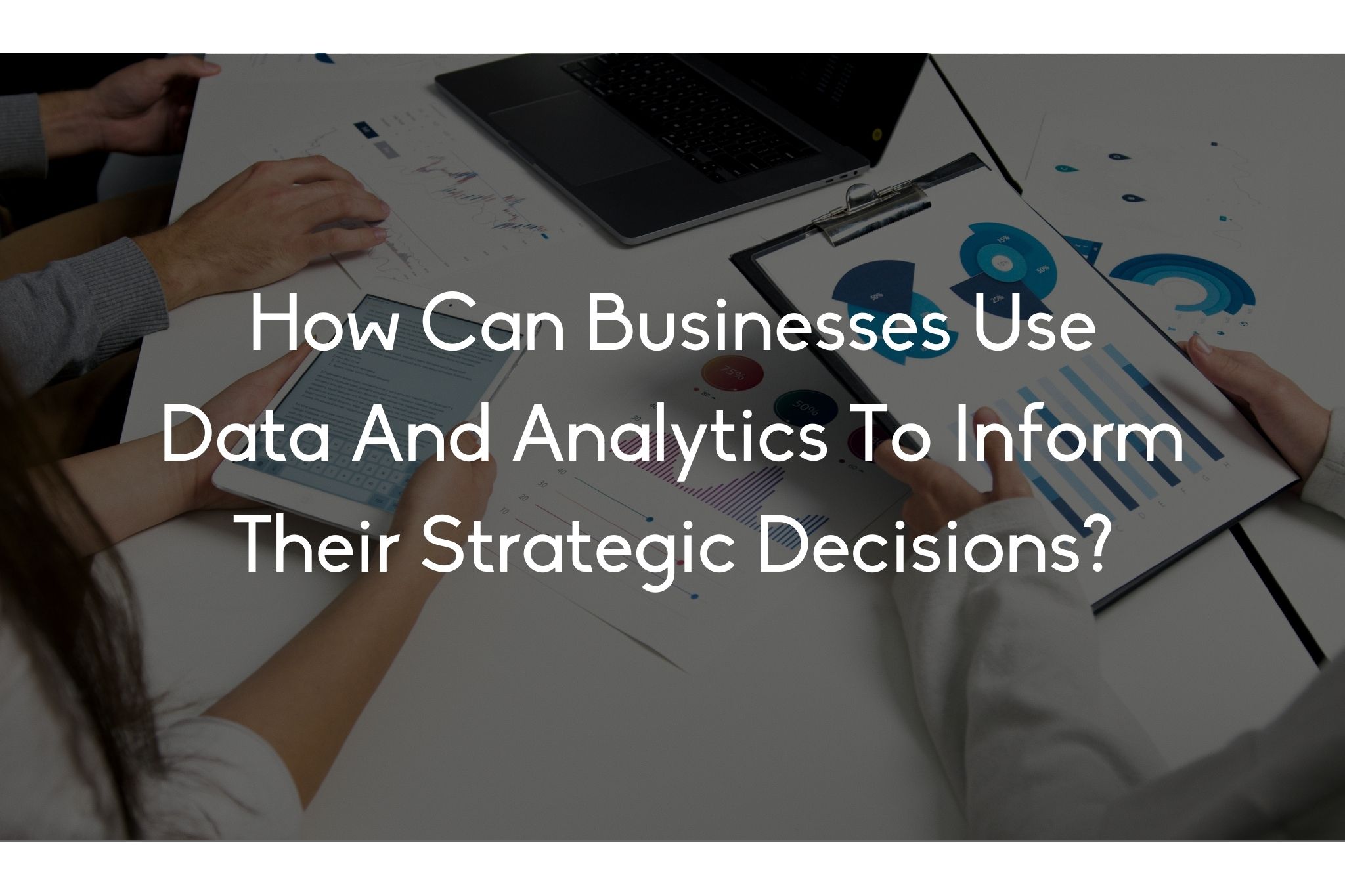
In today’s competitive business landscape, making informed decisions is crucial for success. Data has evolved from being merely a byproduct of operations to becoming a vital asset that can significantly influence strategic decision-making. Organizations are inundated with information from various sources, including customer interactions, sales figures, market trends, and social media insights. However, the challenge lies not just in accumulating this data but in effectively analyzing and using it to inform strategies that drive growth and innovation.
In this article, we’ll explore how businesses can harness data and analytics to make informed strategic decisions, positioning themselves for success in the marketplace.
To effectively utilize data and analytics, businesses must:
We will discuss how to translate data into actionable insights, the benefits of data analytics in decision-making, and practical steps organizations can take to embed data into their strategic planning processes.
As we explore the world of data analytics, we will cover:
By the end of this article, you’ll have a clearer roadmap for leveraging data and analytics in your organization, enabling you to navigate the complexities of modern business with confidence.
High-quality data is the foundation of effective analytics. Poor data quality can lead to:
Key characteristics of high-quality data include:
Organizations must establish data governance practices to ensure data integrity, including:
By prioritizing data quality, businesses can enhance their analytical capabilities and drive better outcomes.
Creating a data-driven culture is essential for maximizing the impact of data on strategic decisions. This cultural shift requires:
By embedding data into the organizational mindset, businesses can unlock the full potential of their data assets and foster a culture of informed decision-making.
Descriptive analytics focuses on summarizing historical data to identify trends and patterns. It answers the question, “What happened?”
A retail company might analyze sales data from the previous year to determine which products performed well during specific seasons. Understanding these trends allows organizations to make informed decisions about:
Predictive analytics employs statistical algorithms and machine learning to forecast future outcomes based on historical data. It answers the question, “What is likely to happen?”
A financial institution may use predictive models to assess credit risk and determine the likelihood of loan defaults. By recognizing patterns in historical data, organizations can anticipate future events and proactively adjust their strategies.
Prescriptive analytics goes a step further by recommending actions based on data analysis. It answers the question, “What should we do?”
A logistics company might use prescriptive analytics to optimize delivery routes by considering traffic patterns, weather conditions, and customer demand. By providing actionable insights, prescriptive analytics empowers organizations to enhance operational efficiency and improve customer satisfaction.
Before embarking on a data analytics journey, organizations must establish clear objectives for their strategic decisions. This involves:
If a company aims to improve customer retention, it should focus on understanding customer behavior and preferences through data analysis.
To effectively analyze data, businesses should invest in tools and technologies that align with their analytical needs. Consider:
These tools can streamline data analysis processes, enabling teams to collaborate and share insights more effectively.
Integrating data into strategic planning should involve collaboration across departments. By fostering communication between teams, organizations can gain a holistic view of their operations.
Marketing, sales, and customer service teams can work together to analyze customer data, identify trends, and develop strategies that resonate with customer needs.
The business landscape is ever-changing, and organizations should continuously monitor their data analytics processes and adjust their strategies accordingly. This involves:
As businesses increasingly rely on data analytics, prioritizing data ethics and privacy is crucial. Organizations must:
Building trust with customers is essential for fostering a sustainable data-driven culture.
Amazon exemplifies the power of data analytics in driving strategic decisions. The e-commerce giant uses customer data to deliver personalized shopping experiences by tracking:
This data-driven approach has been pivotal in Amazon’s growth.
Netflix leverages data analytics to inform its content creation and recommendation strategies. By analyzing viewer habits, Netflix tailors its programming to resonate with its audience, enhancing satisfaction and retention.
Walmart is renowned for its data-driven approach to supply chain management. The retail giant analyzes extensive sales data to accurately forecast demand, optimizing inventory levels and enhancing operational efficiency.
Starbucks employs data analytics to inform its market expansion strategies, analyzing demographic data and consumer behavior to identify optimal locations for new stores.
One significant challenge businesses face is data overload. With vast amounts of data available, organizations may struggle to determine which data points are relevant.
Solutions include:
Many organizations lack the expertise necessary to interpret and analyze data effectively. Solutions include:
Implementing a data-driven culture often encounters resistance from employees. To overcome this, leaders must:
In a world overflowing with data, businesses that leverage analytics for strategic decision-making are better positioned to thrive. By understanding the importance of data quality, utilizing various types of analytics, and implementing best practices, organizations can unlock valuable insights that drive growth and innovation.
Embracing data and analytics is not merely an option; it is essential for sustainable success. By prioritizing data ethics, fostering a data-driven culture, and leveraging advanced analytics, organizations can shape their future and enhance their competitive edge.
This structured format, combined with visual elements and good readability practices, will help your blog perform well on WordPress and attract and retain readers effectively.

